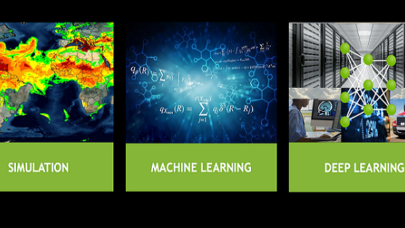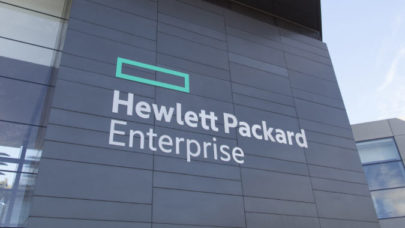
Nvidia T4 and HGX-2 Deployments Keep Piling Up
November 21, 2018
Nvidia’s latest GPU, the T4, continues to rack up wins. Unlike the V100, which is geared for traditional HPC scale-up environments including model training, t Read more…

Nvidia’s Jensen Huang Delivers Vision for the New HPC
November 14, 2018
For nearly two hours on Monday at SC18, Jensen Huang, CEO of Nvidia, presented his expansive view of the future of HPC (and computing in general) as only he can do. Animated. Backstopped by a stream of data charts, product photos, and even a beautiful image of supernovae... Read more…

Brookhaven Fires up ‘Minerva’ DGX-2 in Pursuit of Data Science and AI
November 6, 2018
As part of its ongoing Computational Science Initiative (CSI) targeting data-intensive science and AI workloads, Brookhaven National Laboratory added a Nvidia DGX-2 supercomputer last month. The move is perhaps not surprising given the gush of data Brookhaven deals with. Read more…

Azure Expands Access to CycleCloud; Adds Support for Nvidia Containers
August 29, 2018
Microsoft Azure continued to beef up support for HPC and advanced scale workloads today announcing general availability of CycleCloud – its HPC cloud orchestr Read more…

NSF Project Sets Up First Machine Learning Cyberinfrastructure – CHASE-CI
July 25, 2017
Earlier this month, the National Science Foundation issued a $1 million grant to Larry Smarr, director of Calit2, and a group of his colleagues to create a comm Read more…

HPE Launches Servers, Services, and Collaboration at GTC
May 10, 2017
Hewlett Packard Enterprise (HPE) today launched a new liquid cooled GPU-driven Apollo platform based on SGI ICE architecture, a new collaboration with NVIDIA, a Read more…

IBM, Nvidia, Stone Ridge Claim Gas & Oil Simulation Record
April 25, 2017
IBM, Nvidia, and Stone Ridge Technology today reported setting the performance record for a “billion cell” oil and gas reservoir simulation. Using IBM Minsk Read more…

More Bad News for Gamblers – AI Wins…Again
March 6, 2017
AI-based poker playing programs have been upping the ante for lowly humans. Notably several algorithms from Carnegie Mellon University (e.g. Libratus, Claudico, Read more…

- Click Here for More Headlines

Whitepaper
Transforming Industrial and Automotive Manufacturing
In this era, expansion in digital infrastructure capacity is inevitable. Parallel to this, climate change consciousness is also rising, making sustainability a mandatory part of the organization’s functioning. As computing workloads such as AI and HPC continue to surge, so does the energy consumption, posing environmental woes. IT departments within organizations have a crucial role in combating this challenge. They can significantly drive sustainable practices by influencing newer technologies and process adoption that aid in mitigating the effects of climate change.
While buying more sustainable IT solutions is an option, partnering with IT solutions providers, such and Lenovo and Intel, who are committed to sustainability and aiding customers in executing sustainability strategies is likely to be more impactful.
Learn how Lenovo and Intel, through their partnership, are strongly positioned to address this need with their innovations driving energy efficiency and environmental stewardship.
Download Now
Sponsored by Lenovo
Whitepaper
How Direct Liquid Cooling Improves Data Center Energy Efficiency
Data centers are experiencing increasing power consumption, space constraints and cooling demands due to the unprecedented computing power required by today’s chips and servers. HVAC cooling systems consume approximately 40% of a data center’s electricity. These systems traditionally use air conditioning, air handling and fans to cool the data center facility and IT equipment, ultimately resulting in high energy consumption and high carbon emissions. Data centers are moving to direct liquid cooled (DLC) systems to improve cooling efficiency thus lowering their PUE, operating expenses (OPEX) and carbon footprint.
This paper describes how CoolIT Systems (CoolIT) meets the need for improved energy efficiency in data centers and includes case studies that show how CoolIT’s DLC solutions improve energy efficiency, increase rack density, lower OPEX, and enable sustainability programs. CoolIT is the global market and innovation leader in scalable DLC solutions for the world’s most demanding computing environments. CoolIT’s end-to-end solutions meet the rising demand in cooling and the rising demand for energy efficiency.
Download Now
Sponsored by CoolIT
Advanced Scale Career Development & Workforce Enhancement Center
Featured Advanced Scale Jobs:
HPCwire Resource Library
HPCwire Product Showcase
© 2024 HPCwire. All Rights Reserved. A Tabor Communications Publication
HPCwire is a registered trademark of Tabor Communications, Inc. Use of this site is governed by our Terms of Use and Privacy Policy.
Reproduction in whole or in part in any form or medium without express written permission of Tabor Communications, Inc. is prohibited.
























